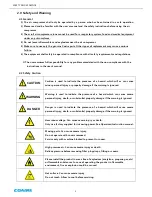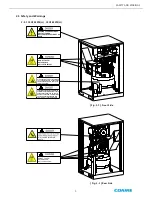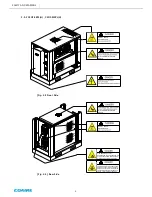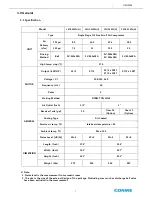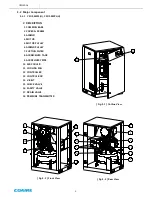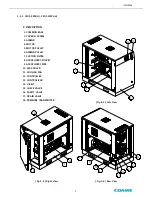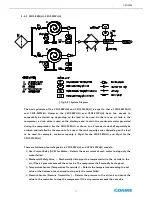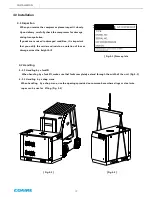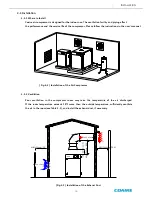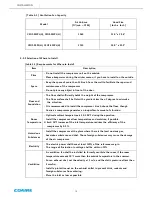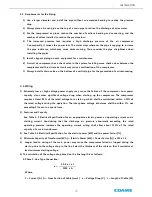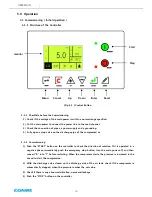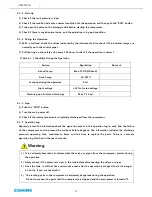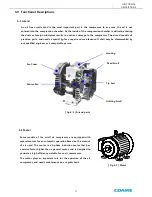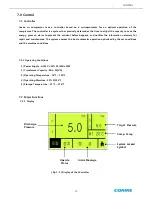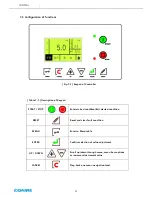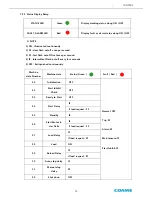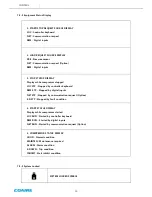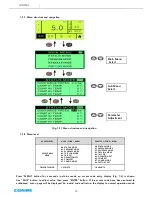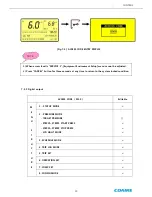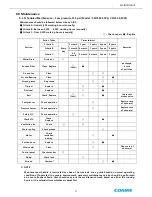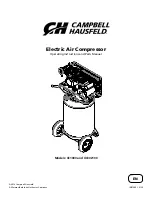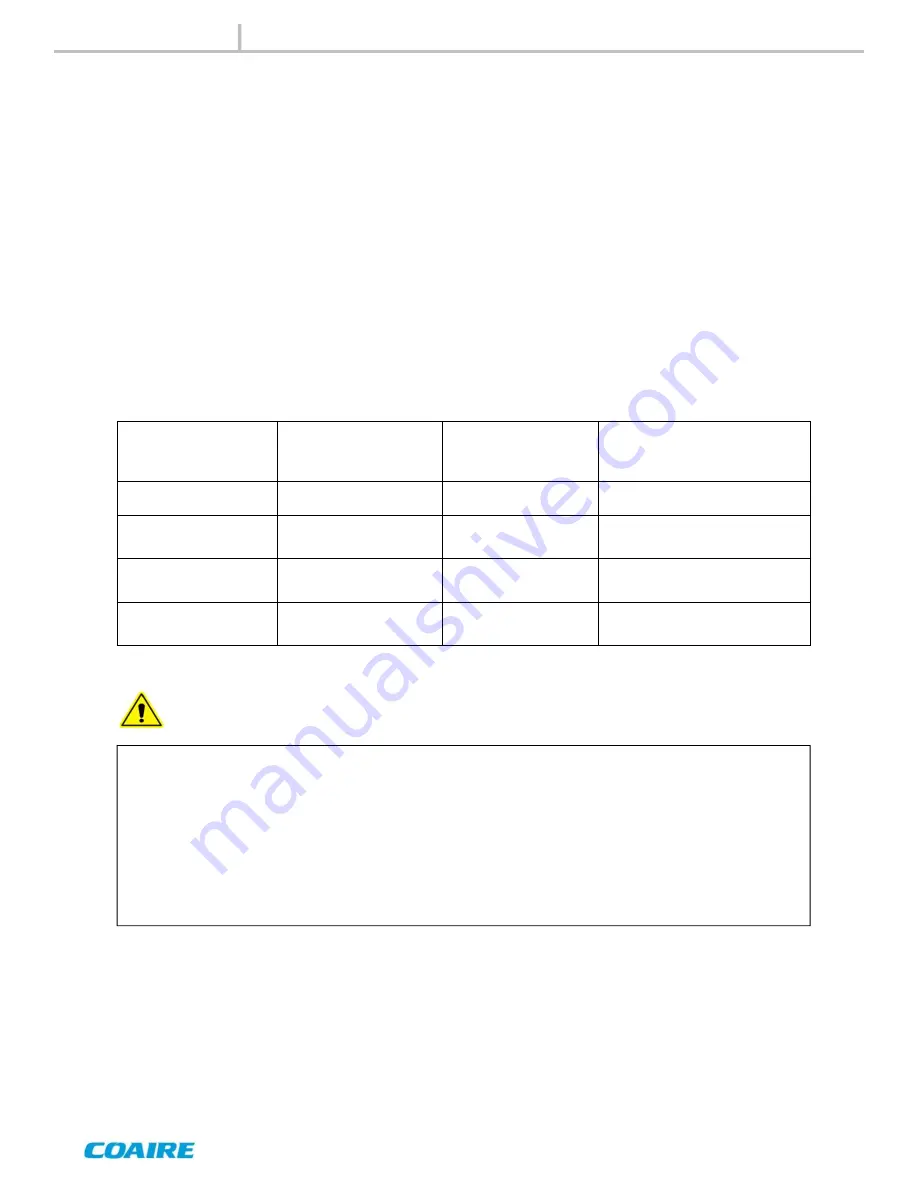
16
[ Table4-3 ] Type of Grounding
7) It is recommended that the thickness of the cable shall allow more than the minimum requirement
specified for a power condenser, and the length of the cable shall be within 1.5 m. No wiring is
necessary if there is a power condenser with a sufficient capacity in the bus conductor.
8) Leave intact the factory specification of the overcurrent protection device. If the change is
unavoidable, keep the set values within the range specified in the user’s manual. The cable shall
allow more than the minimum requirement specified.
9) As the operating current varies depending on a given condition, it is recommended to allow about
20% extra.
10) Install a circuit breaker in the main power to protect the motor. The circuit breaker shall have a
built-in electric leak breaker.
11) Use the ground terminal on a motor or a control box to earth the equipment.
Type
Ground Resistance
Thickness of
Grounding
Conductor
Application
1st-Class Grounding
10Ω
2.6 mm
2
or above
High Voltage Equipment
2nd-Class Grounding
150Ω/1-Line Ground
Current or below
2.6 mm
2
or above
Neutral Point of Transformer
3rd-Class Grounding
100Ω
1.6 mm
2
or above
Equipment with Low Voltage
Less than 400 V
Special 3rd-Class
Grounding
10Ω
1.6 mm
2
or above
Equipment with Low Voltage
More than 400V
INSTALLATION
Causion
1) As the grounding on a steel structure of the building may cause the failure of the operation,
always earth on the ground. The maximum allowable length of the grounding conductor is 20 m.
2) If there is a risk of inductive interference on an electronic calculator or a telecommunication
equipment, install a surge killer on the magnetic switch used.
3) The compressor has a complete wiring inside, and no separate wiring or maintenance is necessary.
If any maintenance is needed, see the circuit diagram in the user’s manual provided with the
compressor.



